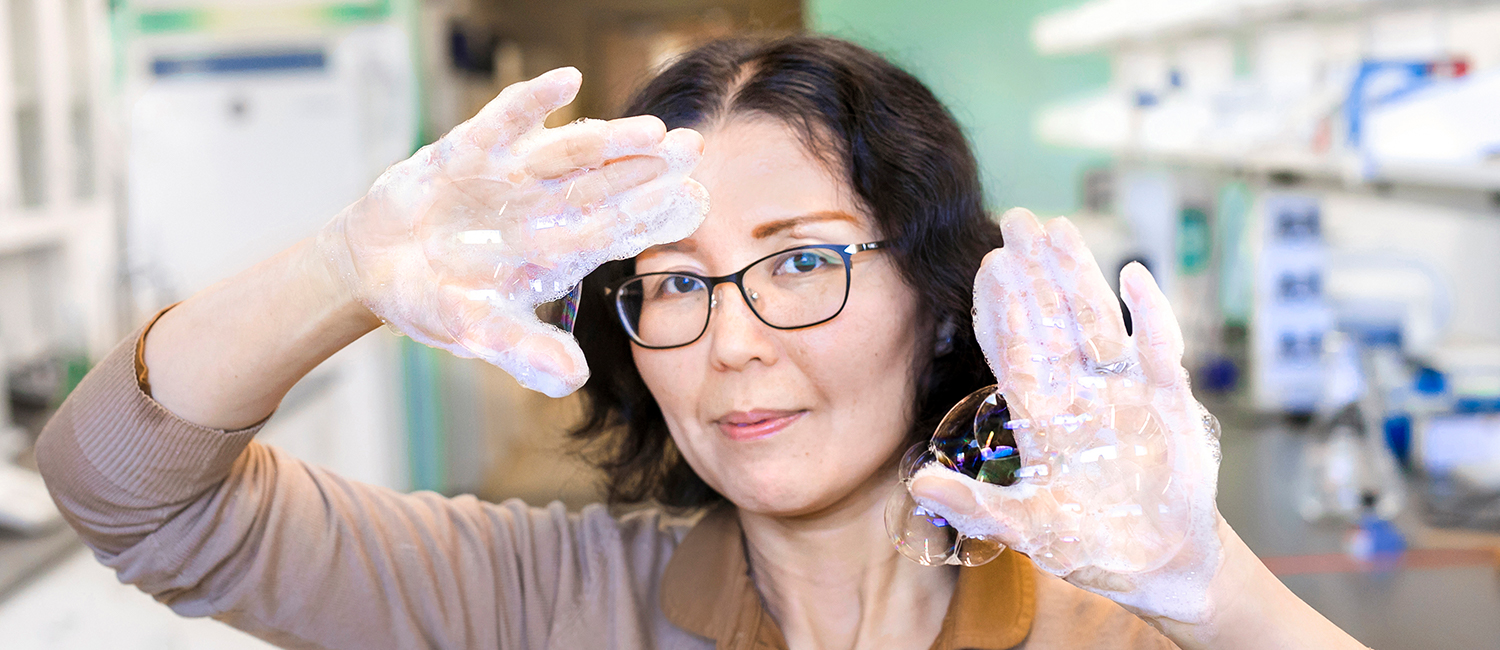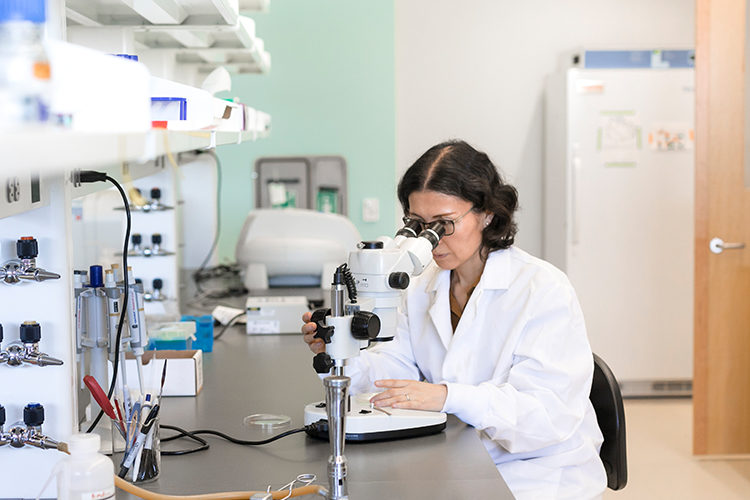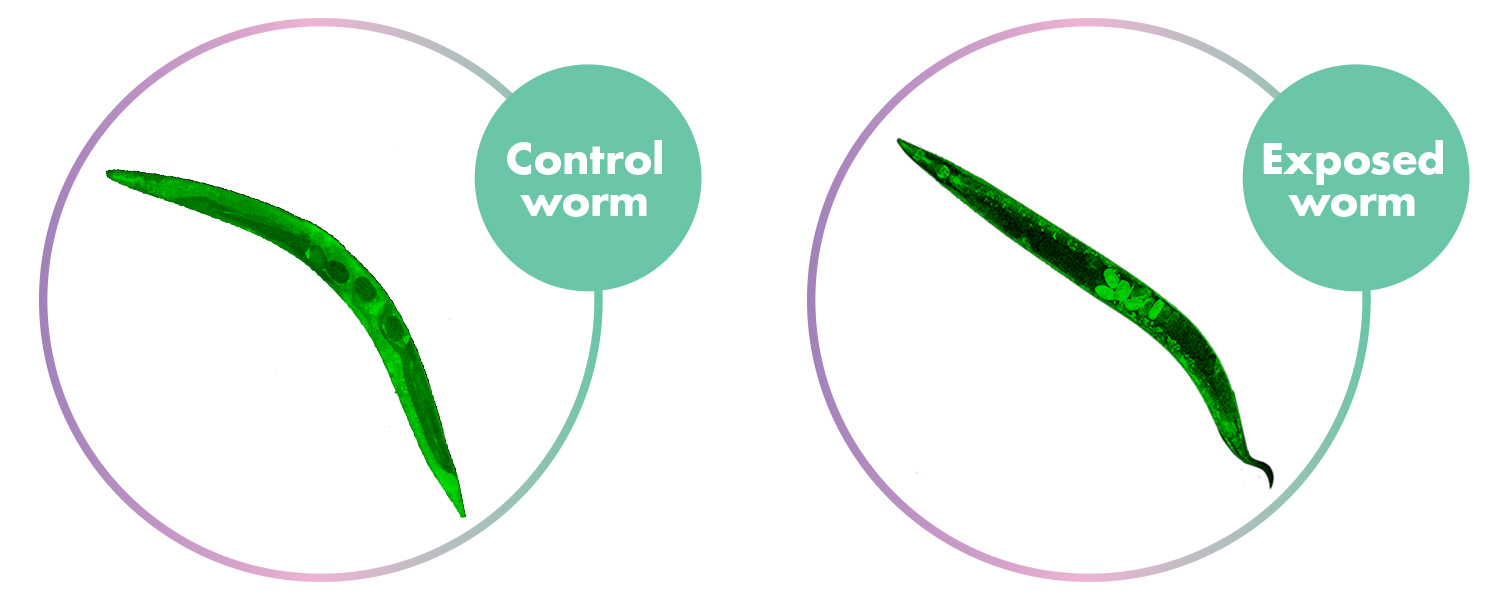
Taking a clean look
Examining the toxicity of new antibacterial additives to hand soaps
Hongbo Ma used to think antibacterial soap was her friend – or, at the very least, her ally – if she thought of it at all. Ma, an associate professor of environmental health sciences in the Joseph J. Zilber School of Public Health, is an environmental toxicologist by training, dedicated to safeguarding human health from dangerous chemicals. Washing one’s hands with a strong soap would seem to be a good way to help cleanse the body of toxins.
However, in 2016, when the U.S. Food and Drug Administration banned 19 supposedly antibacterial additives from over-the-counter hand soaps, Ma took note. She was less concerned with the newly prohibited chemicals – which included the antifungal agent triclosan, the antibacterial triclocarban and the disinfectant hexachlorophene – than she was with what would be in the dispenser next. “The replacement compounds weren’t exposed to much research,” she says. “The question is: Are these new compounds supposed to be safer?”
Ma set out to answer that question. And she found some dirt underneath the fingernails. Not only were the new chemicals no safer to use, but in some cases, they were actually more toxic than the additives they were replacing.
Ma’s research was published in 2018 in Environmental Pollution, a peer-reviewed academic journal that covers the biological, health and ecological effects of pollution. Specifically, Ma and her team examined three commonly used replacement antimicrobials – benzalkonium chloride (BAC), benzethonium chloride (BEC) and chloroxylenol (CX). The study also examined the banned triclosan and triclocarban. Ma wanted to see how each of these compounds affected zebrafish and a particular type of worm (nematode C. elegans).
In the worm, one of the new chemicals, BAC, showed toxicity similar to triclosan even at low levels – not worse, but certainly not an improvement.

But the results for the zebrafish – which are biologically more complex than the worms and, thus, more like humans – revealed bad news across the board. All three replacement compounds showed toxic effects that, in many cases, were worse than those produced by the banned chemicals. Fish embryos hatched later than normal or not at all. Those that did hatch died or were deformed. There was even some indication that the toxicity of the new chemicals affected the fish neurologically, potentially leading to abnormal swimming behavior.
Ma and her team used a staining technology to monitor motor neurons inside the fish larvae. They discovered that, with the exception of the banned triclosan, all of the compounds induced neurotoxicity in the fish larvae, meaning it was toxic to nerves or nervous tissue. This was indicated by changes in secondary nerve fibers and cells.
Perhaps even more alarming than these findings is what scientists don’t yet know about the long-term impacts of introducing the new chemicals into the environment. “What is the ecological relevance?” Ma asks. “Could it be that these effects of the fish behavior are passed on to the next generation? We plan to continue working on that.
“But the lesson,” she continues, “is that we need to be very careful and collect more specific data before we approve new chemicals for wide use through personal care products.”
The reality, as Ma points out, is that the market often outpaces the research. New and different products are developed and promoted containing different and barely tested chemicals. Scientists like Ma can quickly fall behind.

Ma continues to look at these new antibacterial chemicals and also assess the risk of other products, from heavy metals to algal toxins to other personal care products. But she says that it falls to the public to be aware of what they are using and how they are using it.
“We use these antimicrobials because we think they are going to help,” Ma says. “Sometimes that’s the marketing strategy. But that’s not necessarily the case, especially when we are exposed to them every day.”
That might prove problematic in an ever-more germ-conscious world where people can hardly walk through a public space, or a private one, without having the nozzle of an antimicrobial soap or hand sanitizer bottle pointed at them. In the midst of this, Ma’s best advice is to keep it simple.
“Just use regular soap,” she says. “Now I tell my friends and family not to look for that fancy stuff. The old stuff is good enough.”